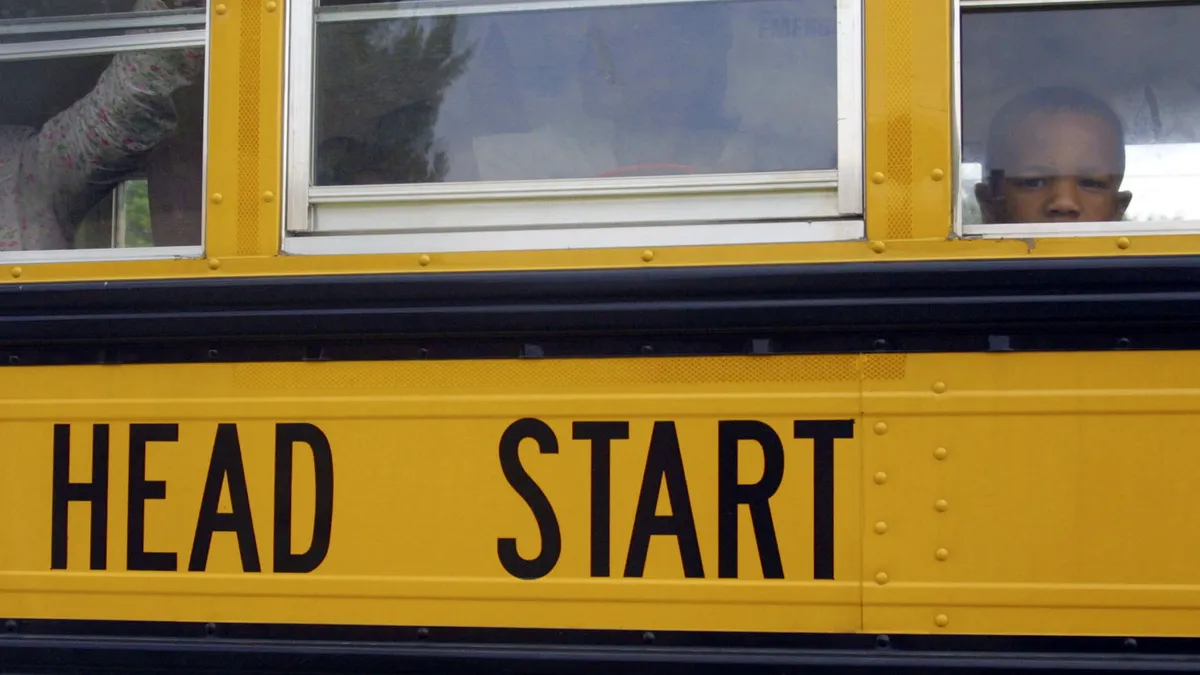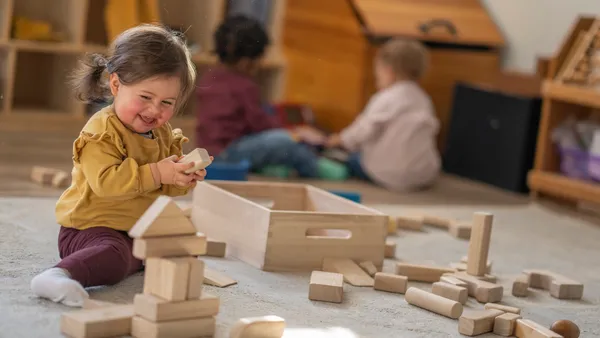A program that supports infants and toddlers with developmental delays and their families could face significant fiscal pressures due to the Trump administration's overall efforts to reduce the size and budget of the federal government.
While no specific cuts to the Part C program have been announced yet, Congress will be contemplating proposals to whittle down annual allocations and a possible reduction to Medicaid payments — both of which help prop up early intervention services under the Individuals with Disabilities Education Act.
"It's a troubling time — both at the federal level and at the state level — because the decisions that are getting made at the federal level have tremendous ramifications at the state level as well," said Maureen Greer, executive director of the IDEA Infant and Toddler Coordinators Association, a professional organization of Part C state coordinators.
IDEA Part C services, also known as early intervention, are provided to infants and toddlers and their families in the child’s home, day care and other settings most familiar to the child. Services can include communication, physical and social or emotional interventions. Parents and caregivers also receive support to encourage the development of their babies.
The Part C program served 462,847 children ages 2 and younger in 2023. That's a 4.8% increase over 2022, according to an analysis by The Advocacy Institute, a nonprofit focused on improving the lives of people with disabilities. IDEA's Part B program served 7.9 million children ages 3-21 in 2023.
States voluntarily participate in Part C because the federal government does not permanently authorize it. All states currently participate in the Part C program, Greer said.
Perhaps the biggest threat to Part C is potential cuts to Medicaid, Greer said. Federal and state Medicaid contributions were the third-largest funding source for Part C at $683 million in 2023, according to research from the Center for Children and Families at Georgetown University's McCourt School of Public Policy.
Congress does not yet have a specific plan to trim Medicaid reimbursements or eligibility. Republican leaders, however, are attempting to drastically cut federal spending, which Democratic lawmakers and public health benefit advocates say would likely be aimed at Medicaid.
House Speaker Mike Johnson said in February there is fraud, waste and abuse in the Medicaid system, making it “hugely problematic.” But President Donald Trump has said he won't support cuts to Medicaid benefits.
Elisabeth Burak, a senior fellow at the Center for Children and Families, said that regardless of what specific proposals would look like, a reduced Medicaid system would, "shift big, big costs to states."
Part C's largest source of funding — at $945 million in 2023 — was from state general fund coffers, and the second largest, at $790 million, was from state Part C allocations. Behind Medicaid as the third-largest contributor is federal Part C funding at $455 million.
Nearly $4 billion in local, state and federal revenue supported the Part C program in 2023, according to an ITCA financial survey.
The Education Law Center has a tool that calculates how much federal funding each state could lose based on a percent reduction. For example, if California's Part C allocation were cut in half, it would equal a loss of $29 million and a reduction of 493 jobs.
Other pressures
In addition to potential budget cutbacks, Part C programs could be hampered by reductions to federally supported technical assistance and support. In recent months, the Trump administration has reduced the Education Department’s workforce by about half, canceled more than $1 billion in education grant funding, and issued an executive order to begin closing the agency, which currently oversees the Part C program as well as IDEA's Part B program for pre-K-12 special education activities.
Trump and U.S. Education Secretary Linda McMahon have indicated their preference to move special education responsibilities to the U.S. Department of Health and Human Services, although no transition plan has been made public.
Greer said ITCA is not taking a position on the potential move of Part C to HHS, but she noted that HHS already houses some early childhood programs and maternal and infant supports such as the home visiting program and Head Start. A preliminary fiscal year 2026 budget planning document for HHS shows, however, that Head Start would be eliminated. The draft budget document also shows program eliminations for universal newborn hearing screenings and newborn screenings for "heritable disorders."
If that Part C transfer to HHS is made, Greer said the funding and workforce expertise for Part C at the Education Department should transfer too.
As it stands, Greer said, Part C coordinators have been able to connect with their state contacts at the Education Department's Office of Special Education Programs. Part B and Part C state programs have been busy this spring completing their state performance plans and annual performance reports, which evaluate each state’s effort to implement the requirements of IDEA and describe how the state will improve its implementation. OSEP uses those reports to determine whether states have met IDEA requirements or need assistance.
More generally, the Part C system is stressed by severe provider shortages, Greer said. "There is a discrepancy between the number of children served and the number of providers available to serve them," she said.
Greer said that with all the unknowns at the federal level, her advice to Part C coordinators has been to "control what you can control."







 Dive Awards
Dive Awards














